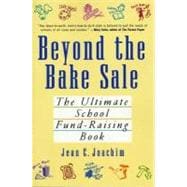
| Acknowledgments | p. xi |
| Introduction | p. xiii |
| The Basics | p. 1 |
| Fall Events | |
| The Pledge Drive | p. 17 |
| The Wrapping Paper Drive | p. 23 |
| School Photos and the Magazine Drive | p. 28 |
| The Halloween Harvest Festival | p. 34 |
| Winten Events | |
| Dances, Friday Night Pizza and a Movie, Kids' Holiday Shopping Day | p. 47 |
| The Auction | p. 58 |
| Spring Events | |
| Car Wash, Handyman Day, Art Show | p. 93 |
| The Book Fair | p. 101 |
| The Just Kids Street Fair | p. 108 |
| Yean-Round Events | |
| The Flea Market | p. 143 |
| The Ultimate Bake Sale | p. 156 |
| Candy Sales, Sports Equipment Exchange Day, Alumni Club, School Store | p. 165 |
| Tapping Corporate America | p. 174 |
| Final Thoughts | |
| Idea Bank | p. 189 |
| Creating New Ideas and Getting Volunteers | p. 197 |
| Important Phone Numbers and Web Sites | p. 207 |
| Table of Contents provided by Syndetics. All Rights Reserved. |
The New copy of this book will include any supplemental materials advertised. Please check the title of the book to determine if it should include any access cards, study guides, lab manuals, CDs, etc.
The Used, Rental and eBook copies of this book are not guaranteed to include any supplemental materials. Typically, only the book itself is included. This is true even if the title states it includes any access cards, study guides, lab manuals, CDs, etc.